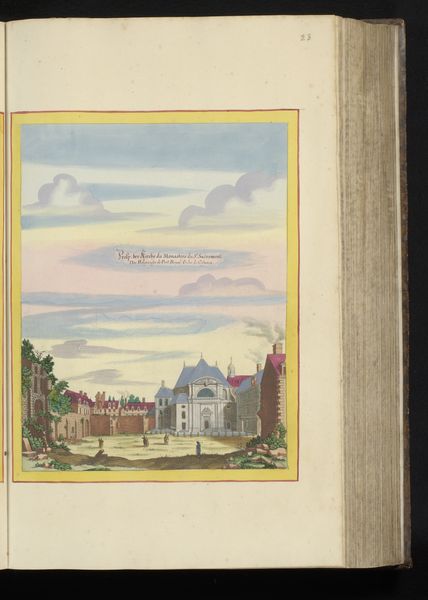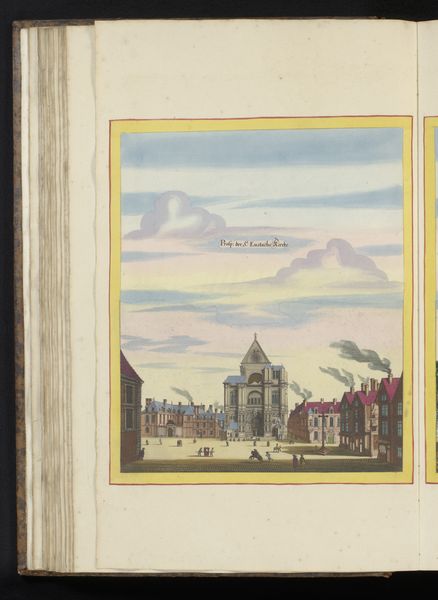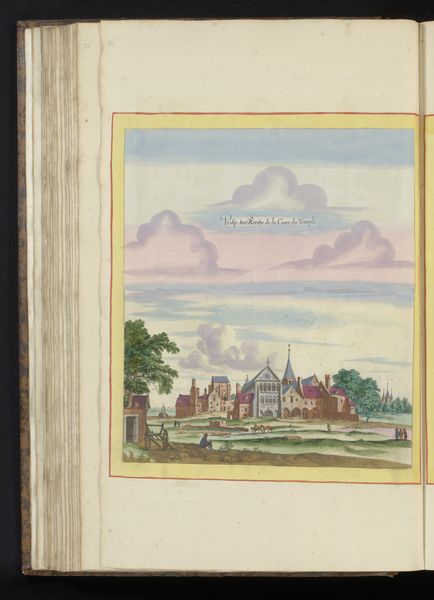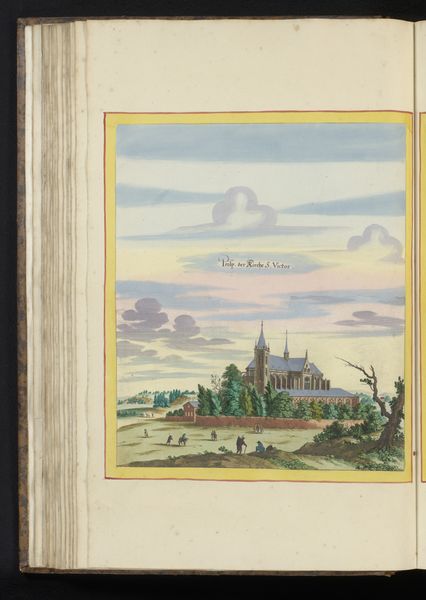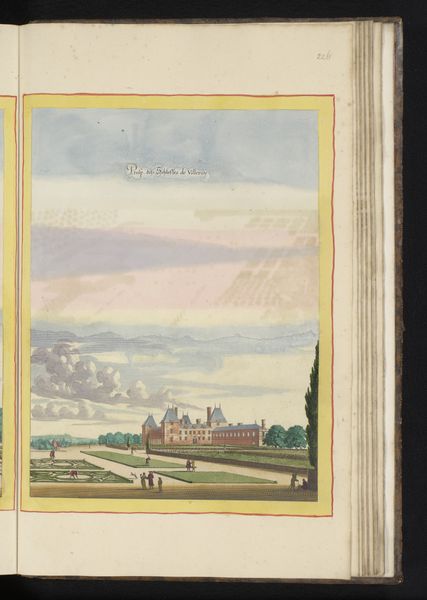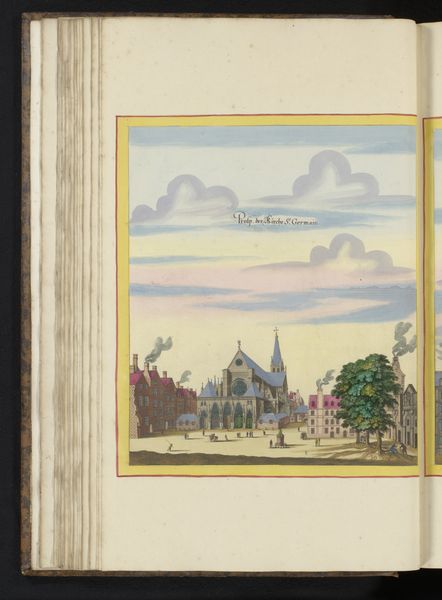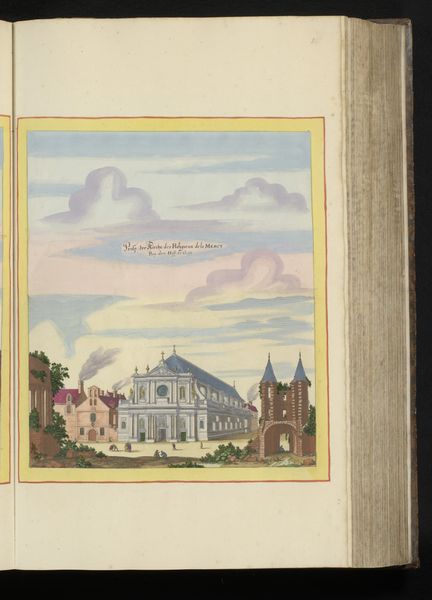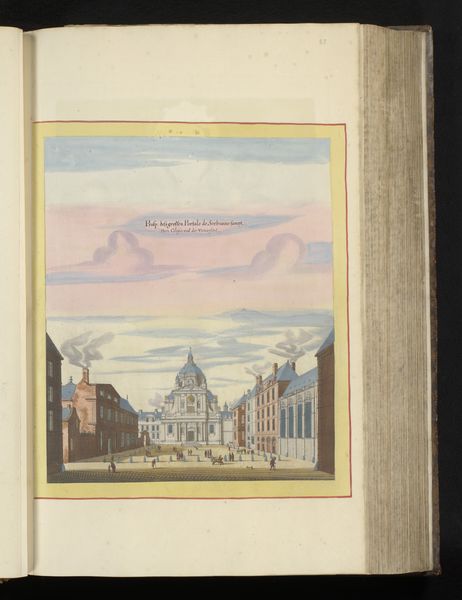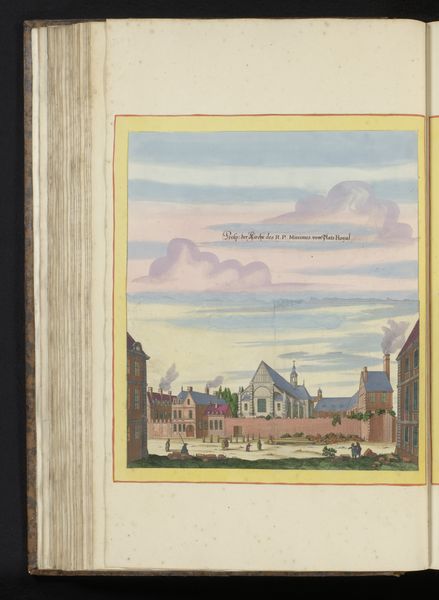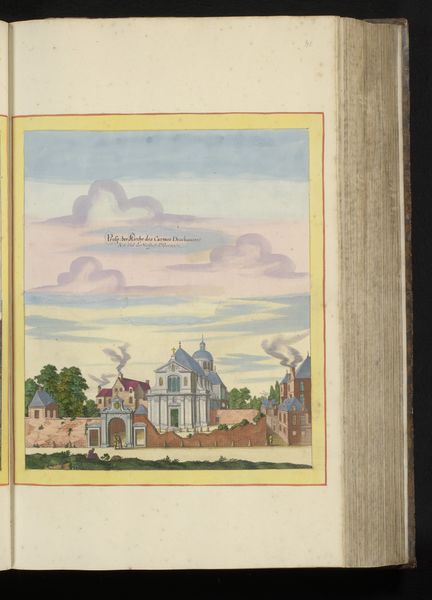
Gezicht op Hôtel Saint-Pol en Église Saint-Paul-Saint-Louis te Parijs 1655
0:00
0:00
matthausiimerian
Rijksmuseum
drawing, coloured-pencil, print, etching, paper, ink, pencil
#
drawing
#
coloured-pencil
#
baroque
#
dutch-golden-age
# print
#
etching
#
landscape
#
perspective
#
paper
#
ink
#
coloured pencil
#
pencil
#
cityscape
#
northern-renaissance
Dimensions: height 322 mm, width 254 mm, height 536 mm, width 318 mm
Copyright: Rijks Museum: Open Domain
Editor: This is Matthäus Merian's "View of the Hôtel Saint-Pol and the Église Saint-Paul-Saint-Louis in Paris," made in 1655 using drawing, etching, and colored pencil. The colors are quite muted. What social context might inform Merian’s perspective of the Hôtel Saint-Pol and the Église Saint-Paul-Saint-Louis? Curator: It's tempting to see this as just a placid cityscape, isn’t it? But we need to delve into the political and religious tensions simmering beneath the surface. The Eglise Saint-Paul-Saint-Louis, for example, was a significant Jesuit church, and the Jesuits were deeply entwined with power structures of the time. How does Merian, as a Swiss artist working in a period of immense religious conflict in Europe, position himself in relation to this Catholic stronghold? Editor: So, is the image itself making a statement, consciously or unconsciously, about power and religious authority in 17th-century Paris? Curator: Exactly. The very act of documenting this architecture could be interpreted as an endorsement, a critique, or perhaps even a veiled warning. The Dutch Golden Age was developing a strong sense of nationhood based on values that run contrary to the opulent image of Paris, here on display. Consider the patrons for whom he created this piece. Who were they and how might their biases further affect the image? Editor: It’s fascinating to think of it as more than just a pretty picture, but a reflection of the push and pull between different factions and beliefs. The composition seems deliberately framed. Curator: Yes! Consider the careful perspective, almost mathematical, used to depict the scene. How might this meticulous detail speak to the broader intellectual and philosophical shifts happening at that time? The rise of scientific inquiry perhaps? What I'm seeing is a work rich with socio-historical cues. Editor: I see your point; there is an entire power struggle conveyed with the interplay between architectural representation and perspective in what I had at first received as an ordinary urban view. Curator: Precisely. And it invites us to interrogate not only the scene depicted but also the historical context in which it was produced.
Comments
No comments
Be the first to comment and join the conversation on the ultimate creative platform.
